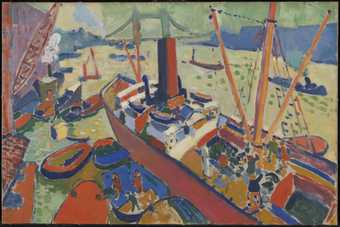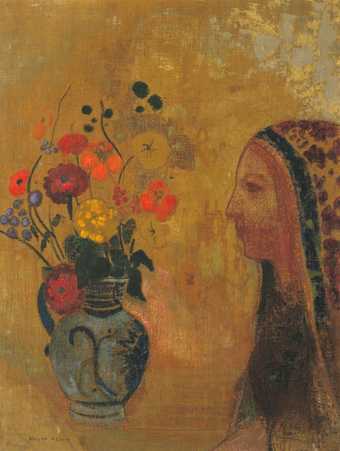
André Derain
The Pool of London
(1906)
Tate

Odilon Redon
Profile of a Woman with a Vase of Flowers
(c.1895–1905)
Tate
From 1725 the exhibitions were held in the room called the salon carré in the Louvre and became known simply as the salon. This later gave rise to the generic French term of ‘salon’ for any large mixed art exhibition. By the mid nineteenth century the academies had become highly conservative, and by their monopoly of major exhibitions resisted the rising tide of innovation in naturalism, realism, impressionism and their successors.
By about 1860 the number of artists being excluded from the official salon became so great and such a scandal that in 1863 the government was forced to set up an alternative, to accommodate the refused artists. This became known as the salon des refusés. Three further salons des refusés were held in 1874, 1875 and 1886.
In 1884 the Salon des Indépendents was established by the neo-impressionists, Georges Seurat and Paul Signac, together with Odilon Redon, as an alternative exhibition for innovatory or anti-academic art. It held annual exhibitions until the start of the First World War.
In 1903 the salon d’automne was founded, also as an alternative exhibition for innovatory artists. It was there that fauvism came to public attention in 1905. The salon d’automne continues to be held in Paris every year.
From then on salon became a generic French term for a large mixed exhibition.
